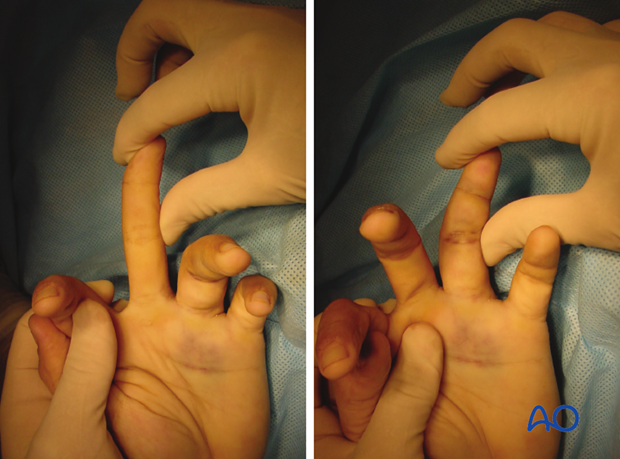Proximal, dislocation
Dislocations
While dislocations and ligament injuries are common in the hand, they are most common at the PIP joint.
The spectrum of these lesions ranges from minor ligamentous stretching (sprains) to complete disruptionsof the ligaments.
Dislocations of the PIP joint are classified according to the direction of displacement of the middle phalanx. They can be palmar, dorsal, lateral, or lateral rotatory.
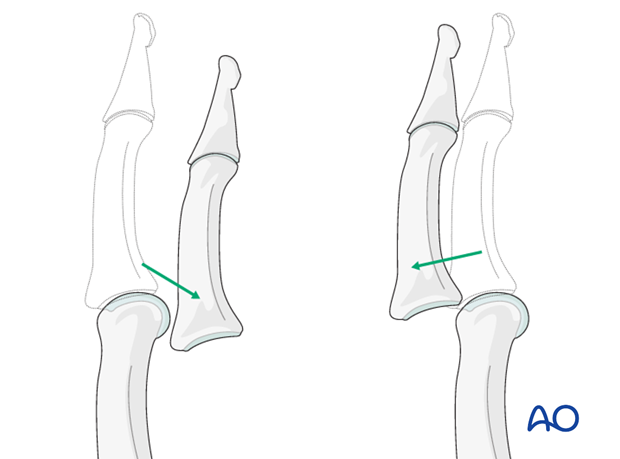
Ligament injuries
The collateral ligament usually tears at one of two locations:
a) at its attachment to the proximal phalanx
b) at its attachment to the volar plate and middle phalanx.
Often, these injuries are accompanied by a partial lesion of the volar plate.
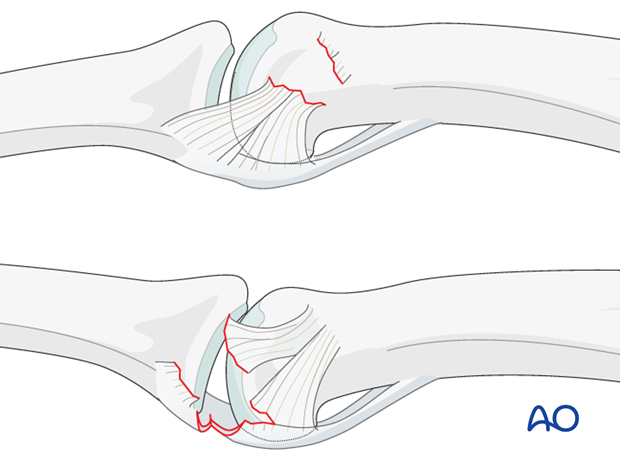
Accompanying fractures
Lateral subluxation can be accompanied by a condylar avulsion fracture, or a plateau (impaction) fracture.
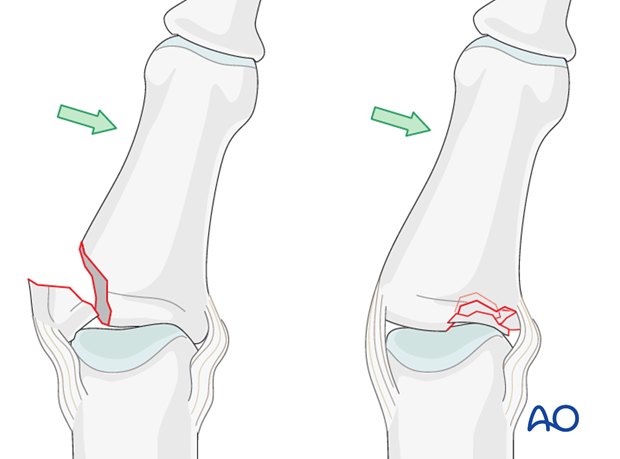
Mechanism of the injury
Typically, these injuries occur as a result of lateral deviation and rotation, with the PIP joint in semi-flexion. This happens during sporting activities, or while catching a finger in rotatory machines, such as drills, etc.
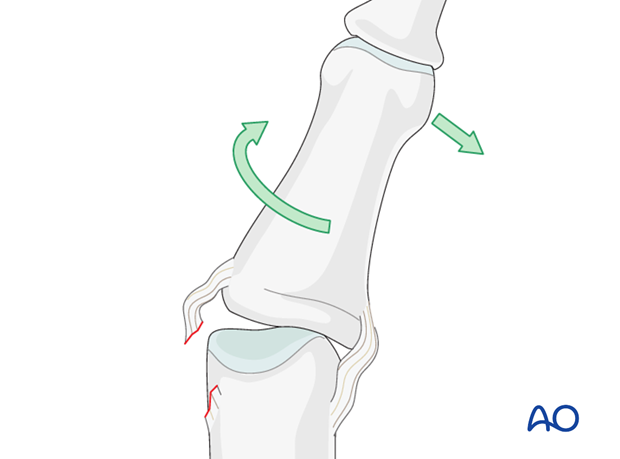
Diagnosis
A diagnosis is made on the basis of the history, the mechanism of the trauma, clinical examination and by x-rays in 2 planes.
Check the digital vascularity and nerve function. Very rarely, these injuries may have an open wound.
A typical sign of collateral ligament injuries is abnormal lateral mobility of the PIP joint, persisting after reduction of the dislocation, when the patient can flex and extend the finger.
